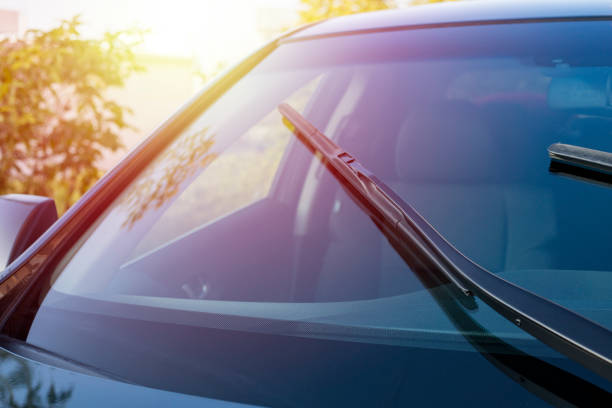November 21, 2023
Why is my wiper motor slow?
A slow wiper motor can be caused by several factors. Here are some common reasons why your wiper motor might be operating slowly:
- Worn Wiper Blades: One of the most common reasons for slow wiper operation is worn wiper blades. If the blades are old and no longer in good condition, they may not make proper contact with the windshield, causing the motor to work harder and move more slowly. Inspect the wiper blades and replace them if they are damaged or worn.
- Wiper Arm Tension: The tension in the wiper arms and linkage can affect the speed of the wiper motor. If the tension is too high, it can slow down the wiper movement. Check for any obstructions or binding in the wiper linkage, and make sure everything is properly lubricated.
- Wiper Motor Malfunction: The wiper motor itself may be malfunctioning. It could have worn-out brushes, a damaged armature, or other internal issues that are causing it to operate slowly. If other potential causes have been ruled out, you may need to replace the wiper motor.
- Electrical Issues: Slow wiper operation can also be caused by electrical problems. Check the wiper motor’s electrical connections, including the wiring and the switch, to make sure there are no loose connections or damaged wires. A weak or failing electrical system can result in reduced power to the wiper motor.
- Fuse or Relay Issues: Your vehicle’s wiper system may have a dedicated fuse or relay that controls the wiper motor. If this fuse is blown or the relay is malfunctioning, it can lead to slow wiper operation or complete failure. Check the owner’s manual or fuse box for the location of the wiper-related fuse and relay, and inspect or replace them if necessary.
- Voltage Drop: Sometimes, a voltage drop in the electrical system can cause the wiper motor to operate slowly. This can be due to a weak battery, corroded battery terminals, or a faulty alternator. Ensure your vehicle’s electrical system is in good working condition.
- Excessive Load: If you have added aftermarket accessories, like heavy-duty wiper blades, to your vehicle’s wiper system, it may put additional strain on the wiper motor, causing it to slow down. Consider returning to the manufacturer’s recommended wiper blades and accessories.
If you’re unable to identify or fix the issue on your own, it’s a good idea to consult a professional mechanic or technician. They can diagnose the problem accurately and recommend the necessary repairs or replacements to get your wipers working at the proper speed again.
Is a wiper motor easy to replace?
Replacing a wiper motor can vary in difficulty depending on your mechanical skills, experience, and the make and model of your vehicle. In general, the process involves several steps, which may include removing the wiper arms, accessing the motor, disconnecting electrical connections, and installing a new motor. Here is a basic outline of the steps involved:
- Gather the Necessary Tools: You will typically need basic hand tools like wrenches, screwdrivers, pliers, and possibly a socket set. Additionally, you’ll need a replacement wiper motor that is compatible with your vehicle.
- Disconnect the Battery: Safety first! Before you start working on any electrical components, disconnect the vehicle’s battery to prevent any accidental electrical shocks.
- Remove the Wiper Arms: Lift the wiper arms away from the windshield and locate the retaining nuts or bolts that hold them in place. Use the appropriate tools to remove these fasteners, and then carefully remove the wiper arms from the motor’s shaft.
- Access the Wiper Motor: Depending on your vehicle’s design, you may need to remove a portion of the cowl or trim panel to access the wiper motor. This step may vary greatly from one vehicle to another.
- Disconnect Electrical Connections: Identify and disconnect the electrical connections to the wiper motor. There may be a wiring harness or a few wires that need to be disconnected.
- Remove the Wiper Motor: Once the electrical connections are disconnected, locate the mounting bolts or fasteners securing the wiper motor to the vehicle’s body. Remove these bolts to release the motor from its mounting bracket.
- Install the New Wiper Motor: Position the new wiper motor in place and secure it with the mounting bolts or fasteners. Reconnect the electrical connections to the new motor.
- Reattach the Wiper Arms: Slide the wiper arms back onto the motor’s shaft and secure them with the retaining nuts or bolts. Make sure they are properly aligned so they sit correctly on the windshield.
- Reconnect the Battery: Reconnect the vehicle’s battery to restore power.
- Test the Wipers: Turn on your vehicle’s wipers to ensure that the new motor is working properly and that the wipers move at the correct speed.
Keep in mind that the specific steps and level of difficulty can vary significantly from one vehicle to another. Some vehicles may have more complex designs or require additional disassembly, while others may have easier access to the wiper motor. It’s always a good idea to consult your vehicle’s service manual or seek professional assistance if you’re unsure about the process or if you’re not experienced with automotive repairs. Additionally, if your vehicle is still under warranty, you may want to consider having the wiper motor replacement performed by a certified technician to avoid voiding the warranty.

